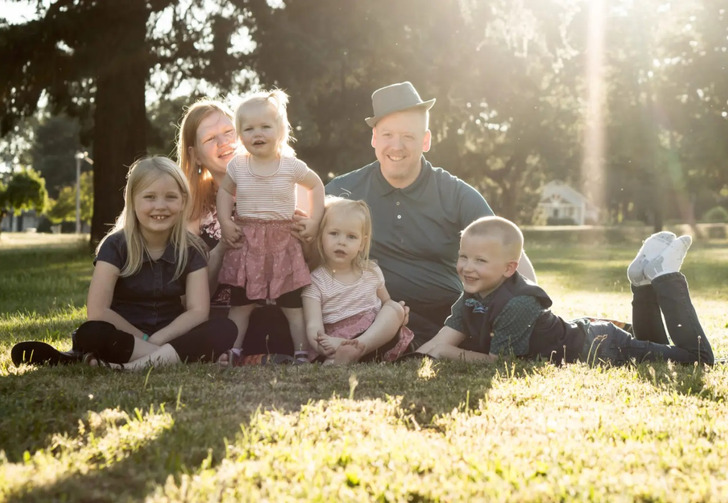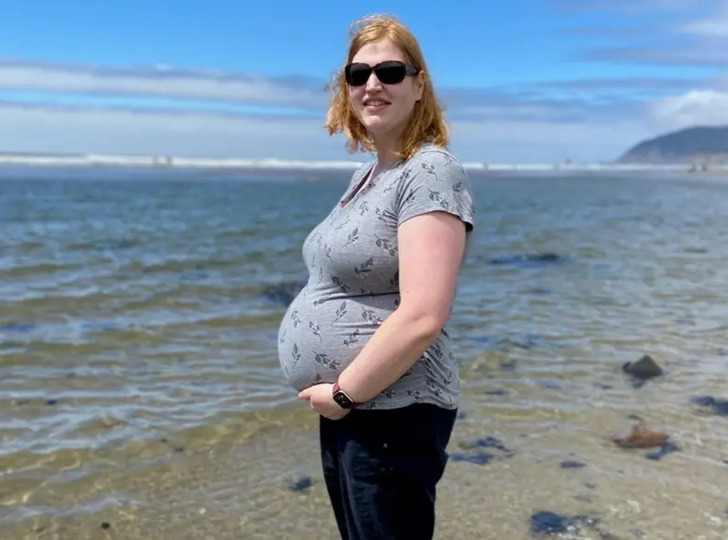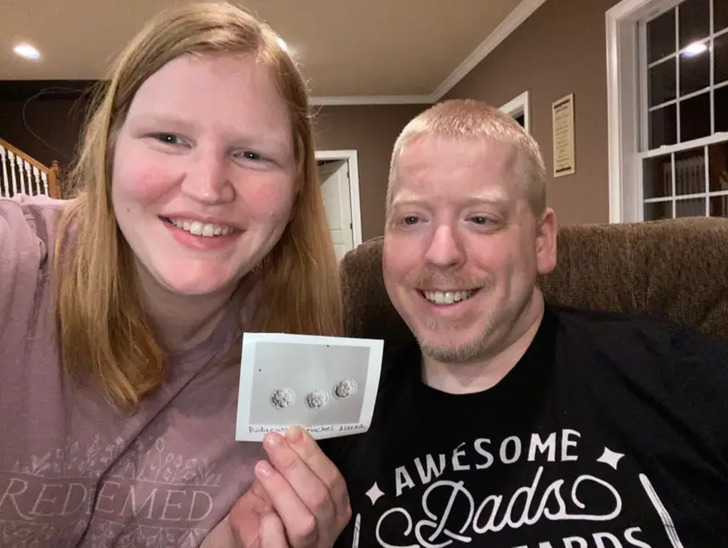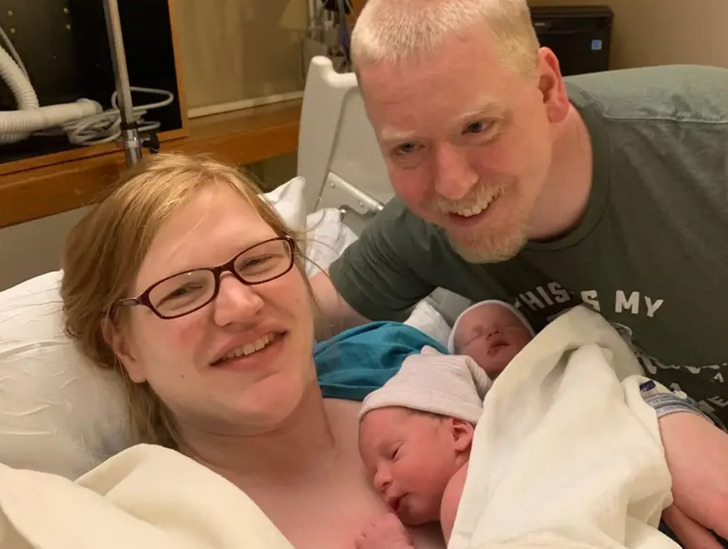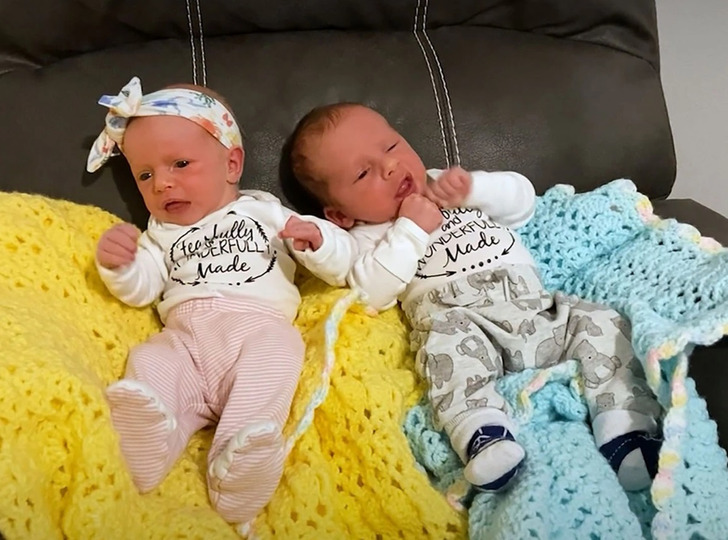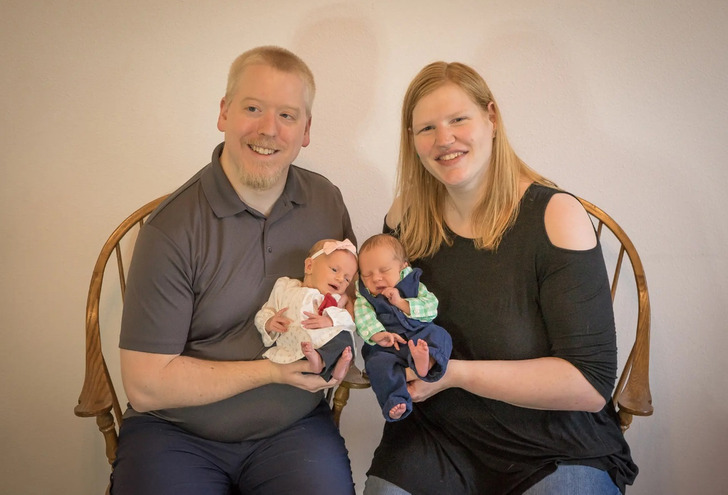An Oregon Couple Always Dreamed of Having a Big Family and Adopted Embryos Frozen 30 Years Ago
When couples want to have as many children as possible but have trouble conceiving, they start considering numerous tests, consultations with doctors, IVF, and the adoption of children that have already been born. But the protagonists of our article decided to expand their family in an unusual way — they adopted embryos and welcomed to the world lives that originated almost 30 years ago.
The couple always dreamed of having a large family.
Philip and Rachel Ridgeway live near Portland, Oregon. The couple adores children, and in their dreams of creating a large and close-knit family, they don’t limit their number at all. On the contrary, they plan to have as many heirs as they can.
Before Philip and Rachel first considered adopting embryos, the couple had three biological children — Naomi, Joshua, and Eliora, who are now 8, 6, and 3 years old respectively. Moreover, when the couple had already scheduled a specialist consultation, Rachel unexpectedly became pregnant naturally and had a daughter, Miriam, in December 2020.
They wanted to use their money for solving problems with conception.
Before welcoming their daughter Miriam into the world, the couple seriously considered fertility treatments. Philip and Rachel had also had difficulty conceiving their three older children and had repeatedly sought help from doctors. The couple had planned to go the same route to have their fourth child, but after hearing about the possibility of adopting unclaimed embryos, they started considering for the first time an alternative to natural conception. Their plans changed a few months later when Rachel suddenly became pregnant with Miriam. The couple returned to the idea after the birth of the youngest Ridgeway.
The adopted embryos were frozen in 1992.
The adopted embryos belonged to an anonymous couple who intended to undergo IVF at a later date. They were frozen on the 22nd of April, 1992, and stored for nearly three decades on cryopreservation straws in liquid nitrogen at around −200°F. However, in 2007, the “parents” of the embryos, who were never able to go through with the IVF, decided to donate them to the National Embryo Donation Center (NEDS) in the hope that another couple could use them.
According to Philip, he and Rachel were not aiming to set a record. They just wanted to give the babies, who had waited the longest time for this moment, a chance to be born. On the 28th of February, 2022, the anonymous couple’s five embryos were thawed, three of which proved viable, and only two were successfully transferred.
The twins were born in October 2022.
Rachel’s pregnancy went relatively smoothly and on the 31st of October, 2022, the couple’s fifth and sixth children, twins Timothy and Lydia Ridgeway, were born. Although the couple didn’t plan it, the birth of the babies set a new record — now they are the longest-frozen embryos to ever result in a live birth. The record stands at 29 years and 10 months. The previous record holder was Molly Gibson, who was born in 2020 from an embryo that had been frozen for almost 27 years.
When the twins grow up, the Ridgeways will tell them this story.
Philip and Rachel are ecstatic after the birth of their youngest children. In the future, they plan to tell Timothy and Lydia the story of their birth. They want the journey their babies have taken to be part of their lives and to remind them how special they are.
The couple believes that their decision to adopt the embryos instead of continuing to struggle with infertility resulted in them saving lives that were trapped. After all, it’s unclear whether Timothy and Lydia would ever have had the chance to be born. Even their choice of embryos was not guided by genetic information, but by how long they waited for the parents-to-be to come for them. And now, as a result of this decision, the twins, who were conceived almost 30 years ago, finally have a loving family.
How many children, do you think, a family should ideally have?
